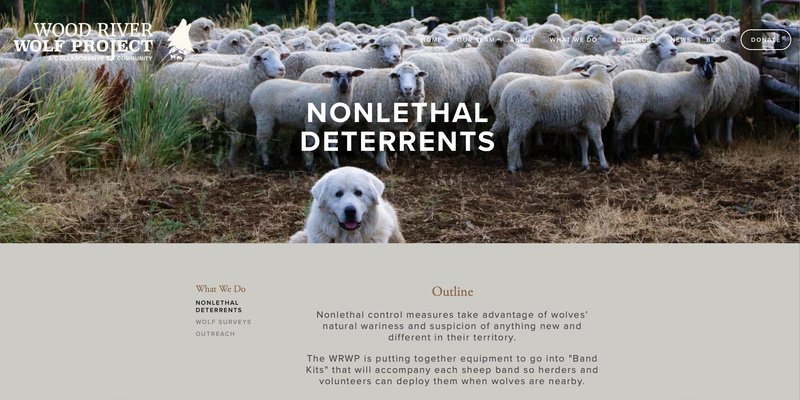
Wolf worms belong to the family of bot flies and exist in various regions, primarily affecting mammals such as deer and rodents. As scientists explore these interactions, they’re finding that the effects of these little parasites can tell us more about animal health and ecosystem dynamics than we might expect. So, grab a cup of coffee, and let’s dive into the world of wolf worms and their intriguing impact on wildlife.
What Exactly Are Wolf Worms?
Wolf worms are the larvae of the **wolf fly**, scientifically known as *Dermatobia hominis*. They are also referred to as **bot flies** and are known for their unique lifecycle. These creatures start off as eggs laid by adult flies, which attach to a host animal. Once the eggs hatch, the emerging larvae burrow into the skin of the host. Here’s where it gets interesting: instead of killing their host, wolf worms often live within the host’s body for several weeks before dropping out to mature into adult flies.
This symbiotic relationship can be surprising. You might be thinking, “How can a parasite like a wolf worm not harm its host?” Well, the answer lies in the balance of nature. While wolf worms can cause localized irritation and discomfort, they usually don’t lead to severe health issues. In many cases, animals can coexist with these larvae without experiencing life-threatening consequences.
The Role of Non-Lethal Studies
Non-lethal studies are crucial for understanding the effects of wolf worms on wildlife without causing undue harm to the animals involved. Researchers often rely on observational studies, where they monitor the behavior, health, and reproduction of host animals naturally infested with wolf worms. This approach allows scientists to gather data without needing to euthanize any animals, which could skew results and compromise the integrity of the study.
In these studies, scientists may observe changes in animal behavior, mobility, and overall fitness. For example, they might find that an animal with wolf worms might be slightly less agile or have a different social behavior compared to a clean counterpart. This data is invaluable, as it helps wildlife biologists understand the broader impacts of parasites on populations and ecosystems.
Impact on Host Animals
You might be wondering: how do wolf worms affect their host animals? While it might seem like a minor nuisance, the presence of these parasites can influence an animal’s health and behavior in several ways.
- Mobility and Fitness: Animals with wolf worms may move differently due to discomfort. This can affect their ability to escape predators or compete for resources.
- Social Structures: Changes in behavior can impact social dynamics within species. For example, infected animals might be less active in socializing or mating, leading to potential long-term population effects.
- Health Monitoring: The presence of wolf worms can serve as indicators of wildlife health. When researchers track these larvae, they gain insights into the overall well-being of host populations.
These interactions remind us that every species plays a role in the tapestry of life. The effects of wolf worms might seem relatively minor, but they can cascade through ecosystems in ways we are just beginning to understand.
Benefits of Non-Lethal Research
Conducting non-lethal studies on wolf worms provides several benefits, particularly in the realm of conservation and wildlife management. One primary advantage is the ability to gather critical data while maintaining animal populations. By keeping the study non-invasive, researchers can observe natural behaviors and interactions that might otherwise be disrupted.
For instance, understanding the prevalence of wolf worms within a population can help conservationists make informed decisions about habitat management and species preservation. If certain areas have high infestation rates, it may indicate underlying environmental issues that need addressing. Moreover, maintaining a healthy balance in wildlife populations is essential for ecosystem stability, and such studies contribute to that understanding.
Future Directions in Wolf Worm Research
As we dive deeper into the fascinating world of wolf worms, researchers are exploring new methodologies and technologies to enhance their studies. For example, advancements in genetic analysis and tracking technology allow scientists to monitor larvae and their effects on host animals more closely. These tools facilitate a more comprehensive understanding of the lifecycle and behavior of wolf worms.
You may also see more interdisciplinary approaches, combining ecology, veterinary science, and conservation biology. This holistic view can lead to more effective management strategies for wildlife populations affected by parasites. The ultimate goal is not just to understand wolf worms but also to apply this knowledge for the greater good of wildlife conservation.
In summary, the study of wolf worms and their impact on wildlife opens a window into the complex relationships within ecosystems. By focusing on non-lethal research methods, scientists are uncovering vital insights into the effects of these tiny parasites. While they may seem like a nuisance at first glance, wolf worms play a role in the delicate balance of nature, affecting host health and behavior in previously unforeseen ways.
This understanding emphasizes the importance of continued research. As we learn more about these relationships, we can better protect wildlife and their habitats, ensuring a thriving ecosystem for all. After all, every little creature contributes to the big picture of life on Earth, and the wolf worm is just one of many fascinating pieces in this intricate puzzle.
